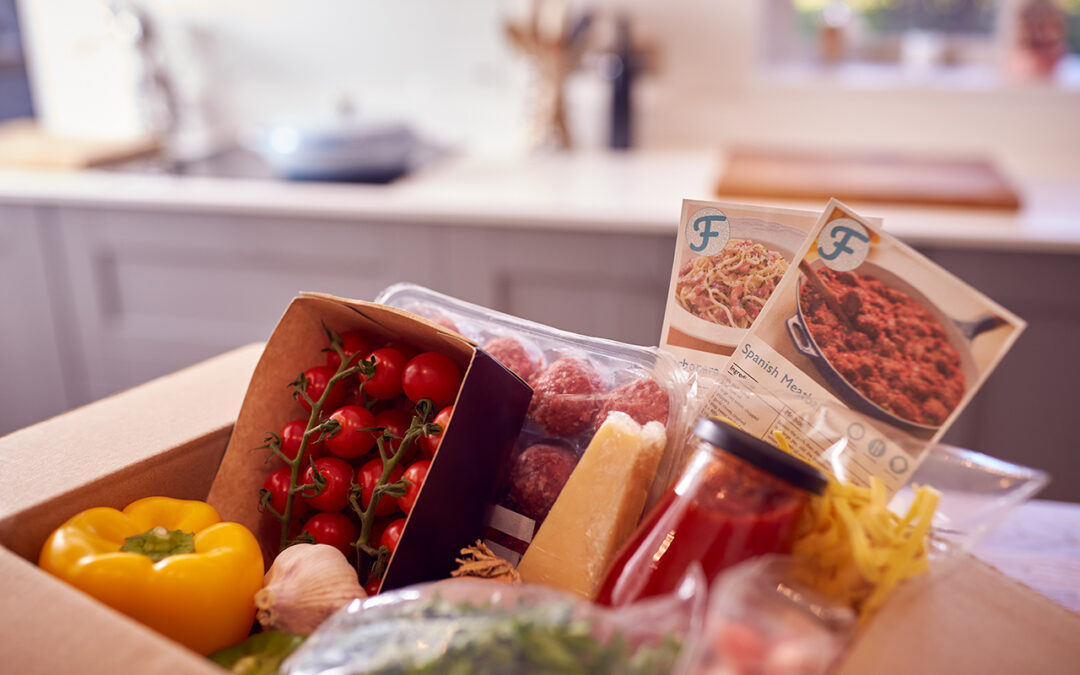Everything you think you know about meal kits is probably wrong. They’re not always more expensive than shopping for the ingredients yourself. They’re not just popular with lazy people or those who lack cooking skills. And, they’re not boring or limited in variety.
The jury’s still out on whether meal kits will provide long-term profitability. Even if it’s a fad, it’s a tasty one — the meal kit delivery industry is estimated to be worth $11.6B by the end of this year.
Unexpected behaviors
As the popularity of meal kits grew, some predicted that this new way of buying the food we eat would disrupt the grocery industry. Grocery chains quickly responded by offering meal kits because they needed to protect their bread and butter (sorry, just couldn’t resist that pun!). And it’s a good thing. Once consumers get a taste of a meal kit, they crave more, but they don’t always want the subscription commitment mandated by most meal kit delivery companies.
Take the recent holidays as an illustration. A pre-Thanksgiving poll showed that only 33% of consumers planned to prepare a holiday meal completely from scratch, while the remaining two-thirds would integrate meal kit options sourced from grocery stores.
Getting in on the game
It’s why America’s two leading grocery chains, Kroger and Albertsons, purchased subscription meal kit companies outright several years ago. Walmart, Amazon (Whole Foods), Publix, and others have introduced meal kits in their stores. Even drug chain Walgreens now features them at some locations.
As a result, shoppers with a preference for meal kits spend a higher percentage at grocery stores than others. So, does this spell bad news for casual dining restaurants? It turns out that meal kit lovers dine out more frequently than the average shopper. Those asked are about 11% more likely to dine out anywhere at least twice weekly. Grocery stores and restaurants are actually benefitting from the proliferation of meal kits.
And the moral of the story is?
The meal kit industry has caused disruption, but it turns out that disruption isn’t always bad. The third most popular reason people say they buy meal kits is that it allows them to try new cuisines. New spices, condiments, and food items appear on grocery shelves and restaurant menus because meal kits feature them and generate attention.
The meal kit approach to dinner isn’t making us lazier. The pandemic made us more health-conscious, but research results show a growing preference — especially among Millennials — to prepare homemade meals.
Making it relevant: from us to you
In some respects, we’ve always taken a meal delivery kit approach to manufacturing flexible packaging and retail merchandising products. They’re “Retail-Ready,” meaning you can quickly get them from us — sort of like walking into your local grocery store and making a single selection that’ll become a delicious dinner this evening.
The art of protecting and displaying things has been our focus for over 40 years. There’s a practical science behind the custom design and manufacturing of flexible packaging and retail merchandising products. We have a collection of over 5,000 in-house dies.
We utilize this library to offer a growing array of what we call “Retail-Ready” flexible and merchandising products that are literally ready to go. Just order, receive your shipment from us, and you can offer them directly to your customers.
We’d love to connect with you!
Contact the Vinyl Art Team at 1-800-569-1304or sales@vinylart.com


